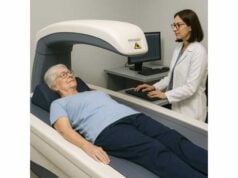
Iron tests sit at the crossroads of energy, cognition, immunity, and cardiovascular health. Yet the panel is often misread or overtreated. Ferritin, serum iron, transferrin (or TIBC), and transferrin saturation work best when interpreted together and in context—symptoms, inflammation, and potential sources of blood loss. This guide shows you how to read the core tests, avoid common pitfalls, and decide when supplements or specialist referral make sense. You will also learn how inflammation shifts ferritin, how to separate low intake from poor absorption, and when high iron points to genetics or liver disease rather than diet alone. For a broader view of smart self-tracking and lab choices, explore our pillar on longevity-focused biomarkers and tools so you can build a panel that fits your goals without unnecessary testing.
Table of Contents
- The Core Panel: Ferritin, Iron, TIBC/Transferrin, and % Saturation
- Inflammation Effects on Ferritin and How to Read Around Them
- Low Iron Patterns: Intake, Absorption, and Blood Loss
- High Iron Patterns: Hereditary and Secondary Causes
- Testing Cadence: Who Needs Monitoring and How Often
- Supplement Caution: Why Testing Guides Decisions
- When to Refer for Specialist Evaluation
The Core Panel: Ferritin, Iron, TIBC/Transferrin, and % Saturation
Ferritin (ng/mL). Ferritin reflects stored iron. In most adults without active inflammation, ferritin below ~30 ng/mL suggests depleted iron stores. Values between ~30–100 ng/mL live in a gray zone and require context: symptoms (fatigue, cold intolerance, hair shedding, restless legs), menstrual history, diet, and other labs. Above ~150–200 ng/mL begins to raise questions about iron overload or inflammation, especially when transferrin saturation is also elevated. Remember: laboratories sometimes report μg/L; numerically, ng/mL = μg/L.
Serum iron (μg/dL or μmol/L). This is circulating iron bound to transferrin at the moment of the blood draw. It fluctuates with time of day and recent meals, so it is a poor solo marker. Do not chase a single borderline value. Focus on ratios that summarize availability over noise.
Transferrin vs TIBC. Transferrin is the carrier protein that moves iron in the blood. Total iron-binding capacity (TIBC) estimates how much iron could be bound if all transferrin were saturated. As stores fall, the liver often makes more transferrin, pushing TIBC up. In iron deficiency, you typically see low ferritin, high TIBC (or high transferrin), and low transferrin saturation.
Transferrin saturation (TSAT, %). TSAT = (serum iron ÷ TIBC) × 100. It indicates how full the “transport seats” are. In iron deficiency, TSAT commonly falls below ~20%. In suspected iron overload, a fasting TSAT ≥45% is a red flag for further workup, especially if ferritin is elevated.
Soluble transferrin receptor (sTfR) and indices. sTfR rises when cells demand more iron (e.g., marrow expansion). It is less affected by inflammation than ferritin and can help distinguish iron deficiency from anemia of chronic disease. The sTfR/log ferritin index is occasionally used in complex cases, but it is not necessary for most preventive care.
Putting it together: common patterns
- Uncomplicated iron deficiency: ferritin low (<30 ng/mL), TSAT low (<20%), TIBC high, serum iron low or low-normal.
- Anemia of chronic inflammation: ferritin normal or high, TSAT low or normal, TIBC low or low-normal. Hemoglobin may be low.
- Probable iron overload pattern: ferritin elevated (often >300 ng/mL in men, >200 ng/mL in postmenopausal women) with TSAT ≥45%, especially if repeated fasting; consider genetics and liver assessment.
Practical notes
- Draw in the morning and, if possible, fasting, to minimize variation in serum iron and TSAT.
- Use the same lab when monitoring trends; methodology differences can shift ferritin by meaningful amounts.
- Always interpret alongside complete blood count (CBC): hemoglobin, hematocrit, mean corpuscular volume (MCV), and red cell distribution width (RDW) sharpen the picture.
Reading iron tests is about pattern recognition, not one magic cutoff. Start with ferritin and TSAT, validate with TIBC/transferrin and CBC, and then ask “why.”
Inflammation Effects on Ferritin and How to Read Around Them
Ferritin rises during inflammation because it is an acute-phase reactant. The liver increases ferritin to sequester iron, making it less available to microbes. That means a “high” ferritin can reflect infection, autoimmune activity, metabolic stress, or liver disease rather than true iron overload. If you test during a cold, a flare of arthritis, or after a hard race, you may see a misleading bump.
How to minimize false signals
- Test when well. Avoid testing within two weeks of a febrile illness, dental infection, or surgery.
- Hold heavy training for 48 hours. Intense eccentric exercise causes transient inflammation.
- Note medications. Recent infusions (iron, IVIG), steroids, or alcohol binges can perturb results.
Use an inflammation marker alongside ferritin. When hs-CRP is elevated, ferritin cutoffs for iron deficiency shift upward. In that context, ferritin below ~70 ng/mL in adults can still indicate depleted stores—even if “normal” on the lab slip. When CRP is high and ferritin is modestly elevated (e.g., 150–300 ng/mL), TSAT helps: if TSAT is low (<20%), you may be iron-restricted despite the ferritin bump. Conversely, if TSAT is high (≥45%), evaluate for overload or liver disease.
Liver health matters. Hepatocellular injury can raise ferritin disproportionally. Non-alcoholic fatty liver disease (now often termed MASLD) and alcohol use commonly push ferritin up while TSAT stays normal. In those cases, improving liver fat through weight loss, glycemic control, and alcohol moderation often lowers ferritin without any iron-directed therapy. For background on assessing fatty liver risk, see our overview of NAFLD screening.
A stepwise approach when ferritin is “high” but you feel well
- Recheck in 4–8 weeks when healthy and rested, with hs-CRP and a fasting TSAT.
- Review alcohol intake, metabolic markers (waist, triglycerides, fasting glucose), and medications.
- Consider liver enzymes (ALT/AST) and ultrasound if risk factors exist.
- If fasting TSAT remains ≥45% with elevated ferritin, evaluate for hereditary hemochromatosis or other iron overload syndromes.
Inflammation shifts ferritin; TSAT and clinical context steer interpretation back to reality. When in doubt, repeat under stable conditions and let trends guide you. For broader context on managing inflammatory noise in labs and wearables, revisit our guide to inflammation markers.
Low Iron Patterns: Intake, Absorption, and Blood Loss
Low iron is common—and often multifactorial. The lab pattern usually shows low ferritin (<30 ng/mL), low TSAT (<20%), high TIBC (or high transferrin), and a microcytic or borderline microcytic CBC (low or low-normal MCV, higher RDW). The three main buckets are inadequate intake, impaired absorption, and blood loss.
1) Inadequate intake
- Menstruating athletes and plant-forward eaters may fall short if total iron intake and enhancers (vitamin C, heme sources) are low. Heme iron from meat, poultry, and fish absorbs more efficiently than non-heme iron from plants.
- Practical fix: Emphasize iron-rich foods (heme sources; legumes; tofu; pumpkin seeds), pair non-heme iron with vitamin C (citrus, peppers), and separate from calcium-heavy meals. For many, diet alone is enough when ferritin is mildly low and symptoms are modest.
2) Impaired absorption
- Celiac disease, inflammatory bowel disease, atrophic gastritis, and H. pylori reduce absorption. Bariatric surgery (especially procedures bypassing the duodenum) markedly lowers iron uptake. Acid suppression (long-term PPIs) may blunt non-heme iron absorption.
- Clues: Iron indices fail to rise with good adherence to oral iron; GI symptoms; known conditions that affect the proximal small intestine.
- Next steps: Test for celiac disease where appropriate; manage gut inflammation; consider intravenous iron when oral formulations fail.
3) Blood loss
- Gynecologic: Heavy menstrual bleeding is the leading cause in premenopausal women. Track cycle length, pad/tampon use, clots, and anemia symptoms.
- Gastrointestinal: Occult bleeding from ulcers, polyps, angiodysplasia, or cancer becomes increasingly relevant after age 50 or with alarm symptoms (weight loss, change in bowel habits, black stools).
- Other: Frequent blood donation, hematuria, and chronic nosebleeds.
How to treat without overdoing it
- Oral iron (e.g., ferrous sulfate providing 45–65 mg elemental iron per dose) once daily or every other day can be effective and better tolerated than multiple daily doses. Vitamin C (e.g., ~250–500 mg) can enhance absorption if tolerated. Take away from calcium, coffee, and tea.
- Intravenous iron is appropriate when oral iron fails, is not tolerated, or absorption barriers exist (active IBD, post-bariatric surgery). Modern formulations allow full repletion in one or two infusions with low risk of severe reaction.
Do not forget nutrient look-alikes. B12 or folate deficiency can coexist and may mask iron patterns (MCV normal or high). If fatigue, neuropathy, or glossitis are present—or if the CBC does not match iron indices—check these as well. For a quick refresher on that panel, see our primer on B12 and homocysteine.
The goal is durable repletion and a clear plan to address the cause. Correcting low iron without identifying bleeding or malabsorption is a missed opportunity.
High Iron Patterns: Hereditary and Secondary Causes
An elevated ferritin does not automatically equal iron overload. Start by separating true iron overload (increased body iron) from reactive ferritin elevation (inflammation, liver injury, alcohol). Your compass is fasting TSAT.
When to suspect true overload
- TSAT ≥45% on a fasting repeat sample plus ferritin above reference for sex/age.
- Family history of iron overload, liver disease, diabetes, early arthropathy, or cardiomyopathy.
- Liver enzyme elevation without another clear cause.
Hereditary hemochromatosis (HFE-related)
- Most common in people of Northern European ancestry; classically homozygous for C282Y in the HFE gene.
- Clues: TSAT ≥45% on fasting testing, ferritin creeping above 200 ng/mL (women) or 300 ng/mL (men), arthralgia (2nd/3rd MCP joints), fatigue, bronze skin, or family history.
- Next steps: HFE genetic testing after abnormal TSAT/ferritin; liver assessment for fibrosis (elastography or MRI) if ferritin is high—many use >1000 ng/mL as a threshold for aggressive liver evaluation; and treatment with therapeutic phlebotomy to normalise TSAT and ferritin.
Non-HFE and secondary iron overload
- Chronic transfusions (e.g., thalassemia, myelodysplasia) deliver excess iron—consider MRI liver iron concentration and chelation therapy.
- Chronic liver disease (alcohol, MASLD/NAFLD, hepatitis) can present with high ferritin and mildly elevated TSAT; managing liver disease is primary. See our practical overview of NAFLD screening for the metabolic contributors.
- Porphyria cutanea tarda, African iron overload, dysmetabolic iron overload syndrome: each has unique patterns; TSAT can be normal or modestly elevated.
When ferritin is high but TSAT is normal
- Think inflammation (periodontal disease, obesity‐related low-grade inflammation), liver injury, alcohol, or metabolic syndrome before genetics.
- Recheck after 4–8 weeks of reduced alcohol, weight reduction, and improved sleep/activity; add hs-CRP and liver enzymes.
Action thresholds to remember
- Fasting TSAT ≥45% → screen for hereditary causes and repeat to confirm.
- Ferritin >1000 ng/mL → urgent evaluation for significant iron overload and liver fibrosis, regardless of symptoms.
- High ferritin with ALT/AST elevation → prioritize liver workup.
Early identification of true overload prevents cirrhosis, cardiomyopathy, arthropathy, and diabetes. The earlier you intervene, the less organ damage accumulates.
Testing Cadence: Who Needs Monitoring and How Often
You do not need monthly iron labs. Tie the cadence to risk, symptoms, and treatment stage. Over-testing increases anxiety and the odds of acting on noise.
If you are healthy with normal indices
- Recheck annually if you have minimal risk: no heavy menses, no GI symptoms, balanced diet, stable training.
- Consider every 2–3 years if your prior values were comfortably normal and you have no new risk factors.
If you are at risk for deficiency
- Heavy menstrual bleeding, endurance training, plant-forward diets, recent pregnancy or postpartum: screen every 6–12 months, or sooner if symptoms (fatigue, reduced exercise tolerance, hair shedding) appear.
- After a low ferritin result (e.g., 10–30 ng/mL) with symptoms: treat, then retest at 8–12 weeks to confirm repletion and symptom resolution.
If you are correcting deficiency
- On oral iron, check ferritin and CBC 8–12 weeks after starting. Continue treatment for ~3 months after hemoglobin normalizes to rebuild stores (often targeting ferritin >50–100 ng/mL in the absence of inflammation).
- On intravenous iron, retest 4–8 weeks post-infusion; earlier draws may not reflect full incorporation.
If ferritin is elevated
- Inflammation context: repeat in 4–8 weeks when well, add hs-CRP and fasting TSAT.
- Suspected overload: if fasting TSAT ≥45% and ferritin elevated, proceed to genetics and liver assessment rather than serial watchful waiting.
- During phlebotomy therapy: monitor hemoglobin each session; track ferritin every 4–8 phlebotomies until target (often ferritin ~50–100 ng/mL) then every 3–6 months during maintenance.
Comorbid conditions that change cadence
- Chronic kidney disease can drive mixed anemia (EPO deficiency plus iron-restricted erythropoiesis). In CKD or heart failure, clinicians often follow iron indices every 3–6 months and time IV iron to functional needs. For context on renal health in a longevity panel, see our quick guide to kidney function.
- Inflammatory bowel disease: cadence depends on disease activity; iron rechecks cluster around flares, treatment changes, and symptom shifts.
A simple calendar
- Baseline → action → confirm (8–12 weeks) → maintain (6–12 months) unless symptoms or risk evolve.
Consistency beats frequency. Keep conditions steady across draws (time of day, fasting, recent training), and track notes (illness, travel, cycle phase). Your goal is a clean trend that supports clear decisions.
Supplement Caution: Why Testing Guides Decisions
Iron is essential—and potentially harmful when taken blindly. Unnecessary iron can worsen infections, fuel oxidative stress, and injure the liver, especially in people with undiagnosed overload conditions. The safest plan is test, treat, retest.
When supplements make sense
- Ferritin below ~30 ng/mL with low TSAT and compatible symptoms.
- Clear cause you are addressing (heavy menstrual loss, postpartum, recent donation), and no red flags for GI bleeding.
- Documented malabsorption or post-bariatric status with iron-deficiency anemia—often IV iron works better and faster than escalating oral doses.
Dosing that respects physiology
- Start once daily or every other day with a simple ferrous salt (e.g., ferrous sulfate) providing 45–65 mg elemental iron per dose. Many people absorb more and feel better on alternate-day dosing than on multiple daily doses, with fewer GI side effects.
- Take with water or vitamin C; avoid simultaneous calcium, coffee, or tea. If nausea occurs, try a different salt, a lower dose, or take with a small snack.
When supplements do not make sense
- Normal ferritin and TSAT without symptoms—there is no longevity upside to “topping off.”
- Elevated ferritin of unclear cause—adding iron risks harm; clarify inflammation, liver health, and TSAT first.
- Fasting TSAT ≥45%—rule out hereditary hemochromatosis and secondary causes before considering any iron.
Why “more” is not better
- Oral iron beyond ~65 mg elemental per dose saturates transporters and increases unabsorbed iron in the gut, which can worsen GI symptoms without improving repletion.
- Stacking multiple iron-containing multivitamins or shakes can inadvertently push intake high without documentation of need.
Safer alternatives when you are borderline
- If ferritin is 30–50 ng/mL with low TSAT but minimal symptoms, consider a trial of dietary optimization plus a lower-frequency supplement (e.g., every other day) and recheck in 8–12 weeks.
- Address root causes first: heavy menses (gynecologic care), GI symptoms (evaluation), or malabsorption (tackle celiac/IBD activity).
Your checklist before starting iron
- Do I have baseline labs (ferritin, TSAT, TIBC/transferrin, CBC)?
- Do I have a probable cause?
- Do I have a retest date on the calendar?
- Does anyone in my family have iron overload, unexplained liver disease, or diabetes/arthropathy at early ages?
Testing reduces both underdosing (weeks of fatigue) and overdosing (iron where you do not need it). Use it to guide, not to justify indefinite pills.
When to Refer for Specialist Evaluation
Most iron issues resolve with clear diagnosis and a time-boxed plan. Refer sooner—not later—when the pattern or the patient’s story suggests something more serious.
Refer to gastroenterology when
- Iron deficiency is recurrent or unexplained, particularly in men or postmenopausal women.
- Alarm features appear: unintentional weight loss, black or bloody stools, dysphagia, persistent upper abdominal pain, or a family history of GI cancer.
- Celiac serologies are positive or symptoms strongly suggest malabsorption.
- After negative initial endoscopy/colonoscopy but ongoing iron loss, consider small-bowel evaluation (capsule endoscopy) through specialty care.
Refer to hematology when
- The CBC shows unusual features (very high or very low MCV, cytopenias beyond anemia, abnormal smear) or anemia persists despite adequate iron repletion.
- You need IV iron selection in complex comorbidity (heart failure, CKD, active IBD).
- There is transfusion dependence or concern for bone marrow disease.
Refer to hepatology or a genetics-savvy clinic when
- Fasting TSAT ≥45% on repeat and ferritin is elevated; especially with family history of liver disease, diabetes, or early arthropathy.
- Ferritin >1000 ng/mL or liver enzymes are persistently high—assess for fibrosis, consider HFE testing, and use MRI liver iron if indicated.
- You suspect secondary iron overload (chronic transfusions, porphyria cutanea tarda, dysmetabolic iron overload).
What to bring to the visit
- A one-page summary: timeline of labs, dosing and adherence to oral or IV iron, menstrual history, blood donation dates, GI symptoms, alcohol intake, and relevant family history.
- Copies of endoscopy, colonoscopy, imaging, and prior pathology results.
Mindset for better outcomes
- Seek the cause before long-term treatment.
- Treat in phases: identify → replete → maintain → prevent recurrence.
- Keep a shared plan with clear thresholds (e.g., “If ferritin not >50 ng/mL after 12 weeks, we will switch to IV iron.”).
If you need a genetics refresher to discuss family screening or consent around hemochromatosis testing, our overview of genetic testing basics can help you prepare questions for your clinician.
References
- WHO guideline on use of ferritin concentrations to assess iron status in individuals and populations 2020 (Guideline)
- AGA Clinical Practice Guidelines on the Gastrointestinal Evaluation of Iron Deficiency Anemia 2020 (Guideline)
- British Society of Gastroenterology guidelines for the management of iron deficiency anaemia in adults 2021 (Guideline)
- EASL Clinical Practice Guidelines on haemochromatosis 2022 (Guideline)
- AGA Clinical Practice Update on Management of Iron Deficiency Anemia: Expert Review 2024 (Guideline)
Disclaimer
This article is for general education and does not substitute for personalized medical advice, diagnosis, or treatment. Always discuss your laboratory results and treatment options with a qualified clinician who knows your history and medications. Seek urgent care if you experience red-flag symptoms such as chest pain, shortness of breath, black stools, or rapid, unexplained fatigue.
If you found this guide helpful, please consider sharing it on Facebook, X (formerly Twitter), or your preferred platform, and follow us for future updates. Your support helps us continue producing clear, evidence-informed content.










